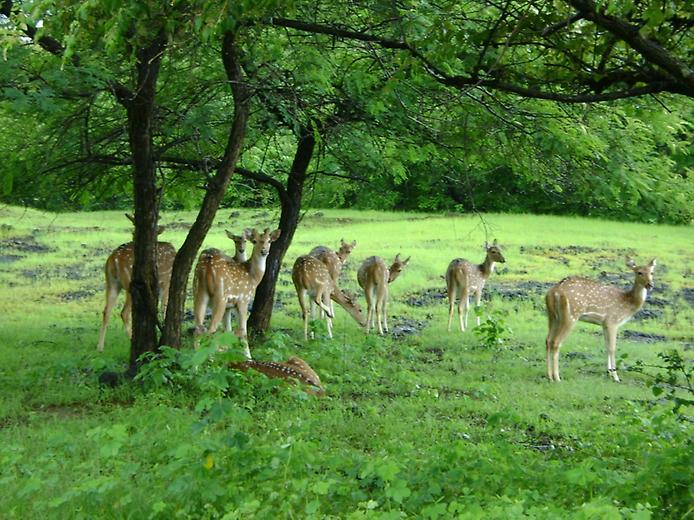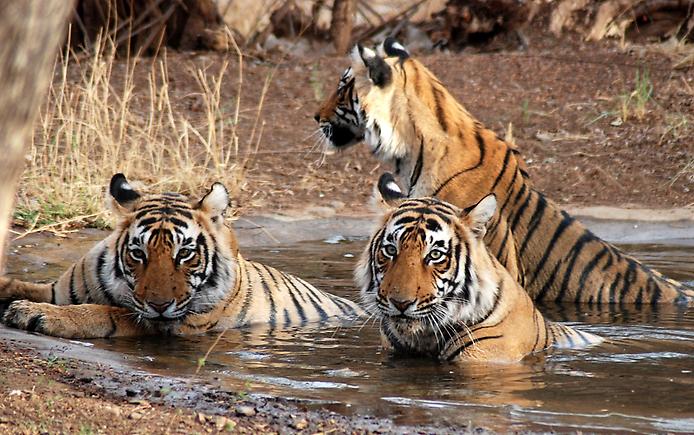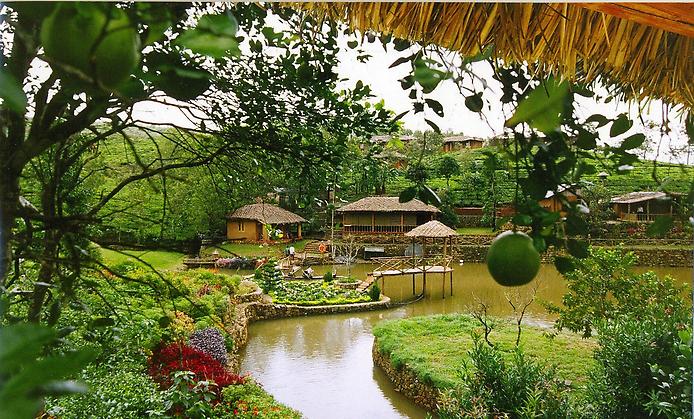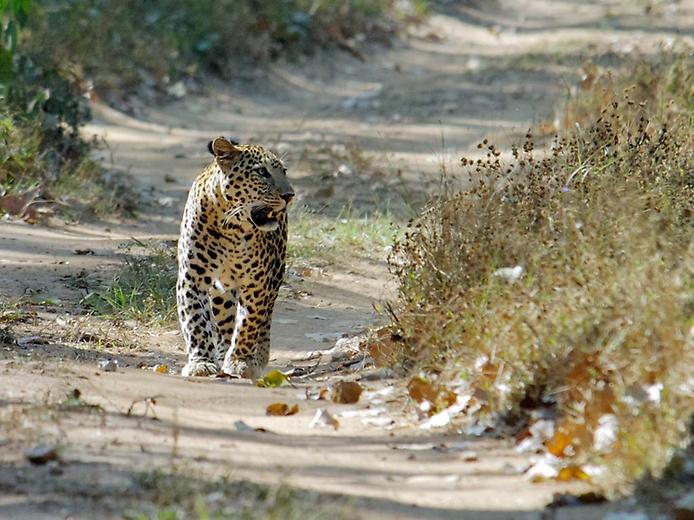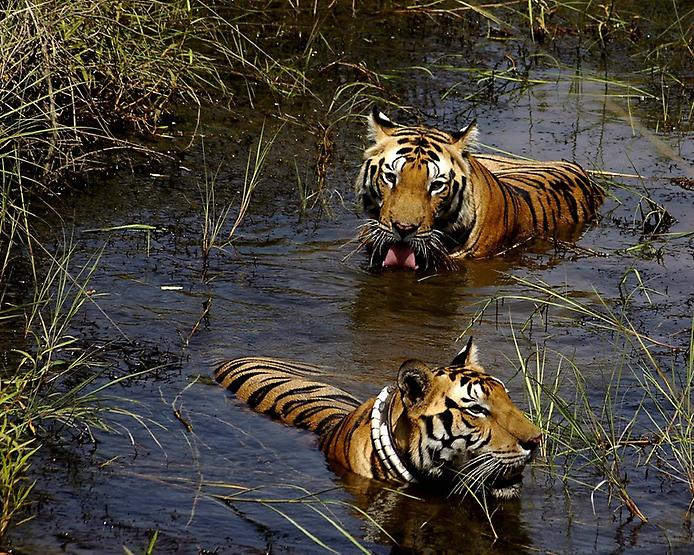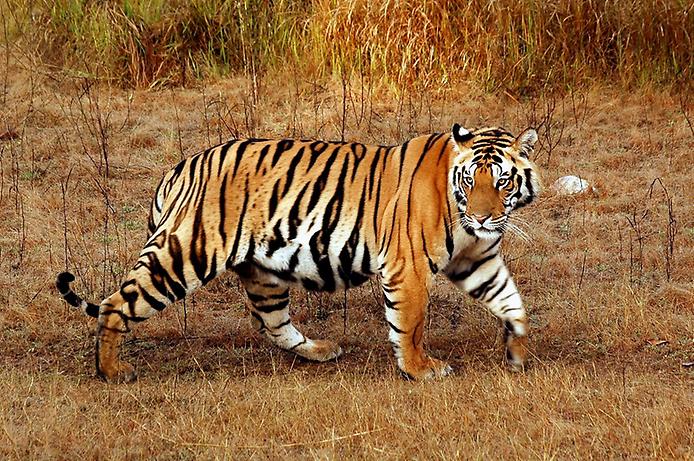Kanha Tiger Reserve, also called Kanha National Park, is one of the tiger reserves of India and the largest national park of Madhya Pradesh state in India.
In the 1930s, the present-day Kanha area was divided into two sanctuaries, Hallon and Banjar, of 250 and 300 km² respectively. Kanha National Park was created on 1 June 1955 and in 1973 was made the Kanha Tiger Reserve. Today it stretches over an area of 940 km² in the two districts Mandla and Balaghat. Together with a surrounding buffer zone of 1,067 km² and the neighboring 110 km² Phen Sanctuary it forms the Kanha Tiger Reserve. This makes it the largest National Park in Central India. Kanha Tiger Reserve was ranked in the top 10 Famous Places for Tourists.
The park has a significant population of Royal Bengal Tiger, leopards, the sloth bear, Barasingha and Indian wild dog. The lush sal and bamboo forests, grassy meadows and ravines of Kanha provided inspiration to Rudyard Kipling for his famous novelKanha Tiger Reserve is home to over 1000 species of flowering plants. The lowland forest is a mixture of sal (Shorea robusta) and other mixed forest trees, interspersed with meadows. The highland forests are tropical moist dry deciduous type and of a completely different nature with bamboo (Dendrocalamus strictus) on slopes. A very good looking Indian ghost tree (Davidia involucrata) can also be seen in the dense forest.Kanha Tiger Reserve abounds in meadows or maidans which are basically open grasslands that have sprung up in fields of abandoned villages, evacuated to make way for the animals. Kanha meadow is one such example. There are many species of grass recorded at Kanha some of which are important for the survival of Barasingha (Cervus duvauceli branderi). Dense forested zones with good crown cover has abundant species of climbers, shrubs and herbs flourishing in the understory. Aquatic plants in numerous tal (lakes) are life line for migratory and wetland species of birds
Kanha Tiger Reserve has species of tiger, leopards, wild dogs, wild cats, foxes and jackals. Among the deer species, Swamp Deer (Cervus duavcelli branderi) or Hard Ground Barasingha is pride of the place as it is the only sub species of swamp deer in India. The animal is adapted to hard ground unlike swamp deer of the North which live in marshy swamps. The reserve has been instrumental in rescuing the Swamp Deer from extinction. Indian Gaur (Bos guarus), belonging to the ox genus, is found in Kanha but seen mostly as winter ends. In summer gaur inhabit meadows and water holes in the park.
Other commonly seen animals in the park include the spotted deer, sambar, barking deer and the four-horned deer. The latter can be seen at Bamni Dadar climb. Recently, mouse deer have also been discovered in the tiger reserve.
Black buck have inexplicably become very rare. They vanished completely, but have been reintroduced recently inside a fenced area in the park. Nilgai can still be seen near the Sarahi Gate, while the Indian wolf once commonly seen at Mocha is a rare sight now. Hyena and sloth bear are seen occasionally. Langurs and wild boars are common, but the pugnacious rhesus macaque is seen less often.
Nocturnal animals like fox, hyena, jungle cat, civets, porcupine, ratel or honey badger and hares can be seen outside the park confines. Reptiles like pythons, cobras, krait, rat snakes, vipers, keelbacks and grass snakes are nocturnal animals, and are therefore rarely seen. There are many species of turtles as well as amphibians found in or near the water bodies.
Kanha and Satpura National Park being a part of Gondwana, now famous as a tiger reserve, was once ruled by wild Indian ElephantsAn exciting conservation effort in this national park is the reintroduction of barasingha. The Gaur will be relocated to Bandhavgarh and some Barasingha will be relocated to Satpura Tiger reserve The objective of this project is to introduce about 500 Barasingha in this national park to eight or nine different locations. There is also a project to capture about twenty tigers and relocate them to Satpura Tiger reserve
Members of the Baiga tribe, a semi-nomadic tribe of central India that is reliant on the forest, lived in 28 villages that had been within the Kanha National Park until 1968, when they were relocated. The relocation was part of an effort to maintain a critical tiger habitat.The land to which they were relocated is barren and they now suffer from alcoholism and malnourishment, and beg to support themselves. The last of the villages to be relocated for the tiger habitat is in the core zone of the Kanha Tiger Reserve. The area is the ancestral home of the Gond and Baiga tribes. In January 2015, Baiga tribe were illegally evicted from the park without proper compensation from the government, according to Survival International.In its efforts to maintain and restore tiger habitats, WWF-India has worked to create corridors that support the tigers and their prey, thereby stabilizing the tiger population. This includes efforts to prevent loss of life or property of humans, reduce human dependency on the forest, and reduce retaliatory killings of tigers when people have experienced losses




